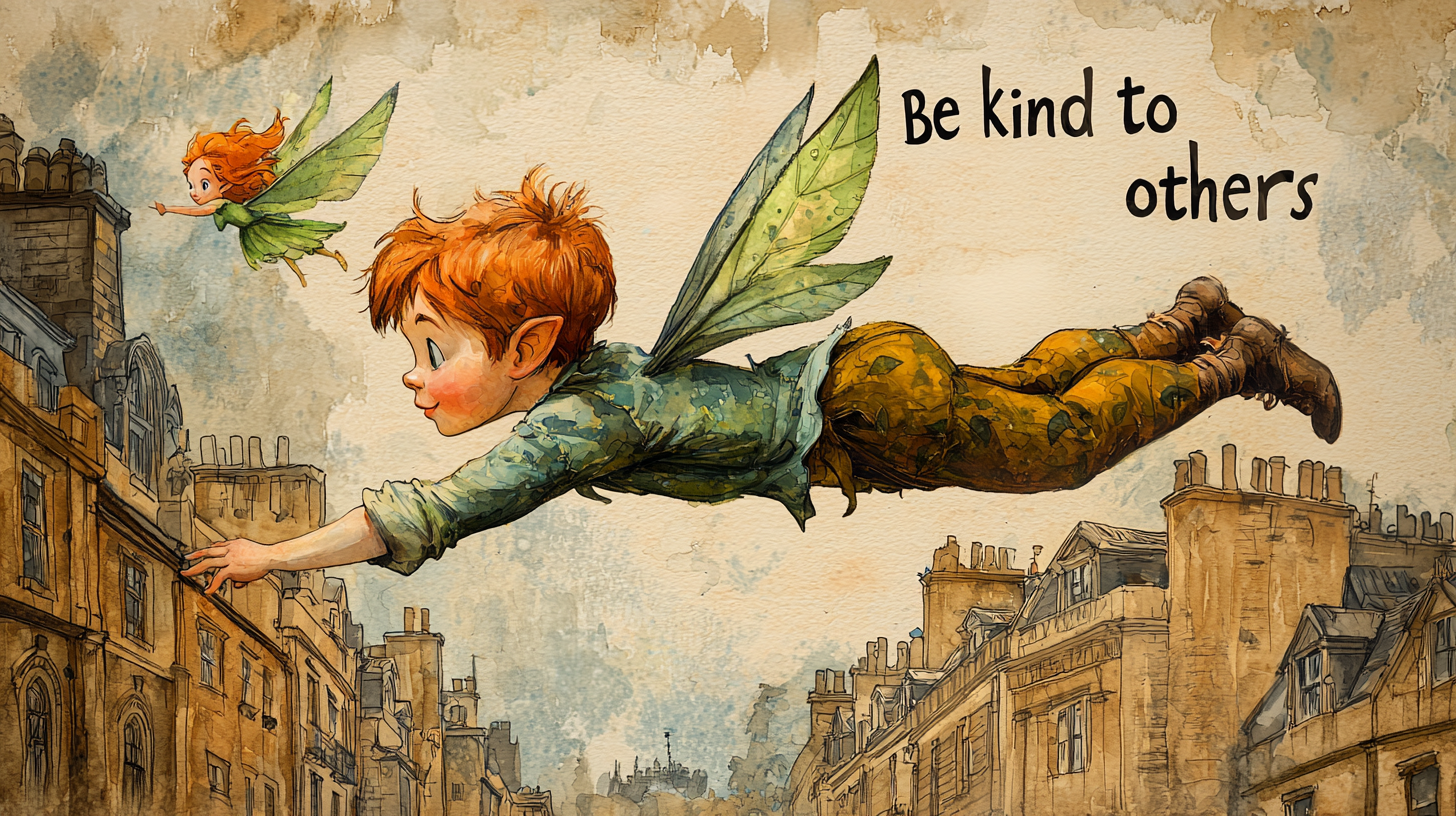Peter Pan and Tinker Bell stood on the highest rooftop in London, the city lights twinkling below like a sea of stars.Peter gazed into the distance, his eyes filled with a mix of excitement and longing."I want to see Neverland," he declared, turning to face Tinker Bell."I need to explore it for myself."She smiled warmly at him."I can help you get there," she replied."But first, you must learn how to fly."He blinked in surprise."Fly?" he echoed."But I don't have wings."She laughed lightly."You don't need wings," she assured him."All you need is a little bit of pixie dust and a lot of faith."He looked skeptical but intrigued."Do you really think I can do it?" he asked."I believe you can," she said confidently."Do you believe in yourself?"He considered her question."I want to believe," he admitted."But I'm not sure how."Tinker Bell fluttered closer, her wings shimmering."Close your eyes," she instructed.He obeyed, shutting his eyes tightly."Now, think of the happiest thoughts you can," she continued."Imagine yourself soaring through the sky."He pictured himself gliding among the clouds, the wind rushing past his face.A smile spread across his lips.She sprinkled golden pixie dust over his head, the tiny sparks drifting down around him."Alright," she said softly."Open your eyes."Peter opened his eyes and looked down."Hey!" he exclaimed."I'm floating!"His feet were no longer touching the rooftop.He wobbled slightly, arms flailing."Whoa, how do I control this?" he asked nervously.Tinker Bell giggled."Relax," she advised."Let yourself feel the movement."He took a deep breath and tried to steady himself.Gradually, he began to feel more comfortable."This is incredible!" he shouted joyfully."I'm really flying!"She nodded."Yes, you are," she affirmed."Now, shall we take to the sky?"He grinned widely."Absolutely!" he agreed.They ascended higher, leaving the rooftops behind.The city stretched out below them, a tapestry of lights and shadows.Peter's heart raced with exhilaration.He tilted forward and soared ahead, the cool night air whipping through his hair."This feels amazing!" he called out.Tinker Bell flew alongside him, her laughter ringing like chimes."You're a natural," she praised.They weaved between the clouds, which glowed softly in the moonlight.Stars glittered all around them, closer than Peter had ever seen before.He reached out as if to touch one."The stars are beautiful," he remarked."I never knew they were so bright.""There's so much more to discover," Tinker Bell told him."Neverland is just beyond the horizon."He felt a surge of determination."I can't wait to get there," he said eagerly.They flew over the Thames River, which glistened like a ribbon of silver beneath them.The bridges and buildings looked tiny from their height.Peter practiced looping and spinning, growing more confident with each moment."Look at me!" he shouted, performing a daring spiral.Tinker Bell clapped her hands."Well done!" she cheered.He laughed, feeling truly alive."Thank you for teaching me," he said sincerely."I couldn't have done it without you.""You had the ability all along," she replied."You just needed to believe."They continued flying, the night enveloping them like a comforting blanket.Peter glanced back at the receding city lights."Goodbye, London," he whispered."I'm off to new adventures."Tinker Bell pointed ahead."See that bright star?" she asked."That's the way to Neverland."He followed her gaze.A particularly radiant star shone in the distance."Second star to the right and straight on till morning," she recited.He smiled."Then that's where we're headed," he declared.They flew onward, their spirits high.Peter felt a newfound confidence blossoming within him.He realized that trying new things wasn't so scary after all.With Tinker Bell by his side, he knew that anything was possible."This is just the beginning," he thought to himself.The vast sky stretched out before them, filled with endless possibilities.

